Curfew ‘not off the table’ government votes to extend state of emergency provisions
Victoria’s Chief Health Officer has flagged the possibility of ongoing curfew restrictions but believes a coronavirus vaccine is likely within 12 months. It comes after 90 cases were recorded, with six additional deaths; and a proposed extension of state of emergency provisions was passed.
Victoria
Don't miss out on the headlines from Victoria. Followed categories will be added to My News.
This coronavirus article is unlocked and free to read in the interest of community health and safety. Get full digital access to trusted news from the Herald Sun and Leader for just $1 a week for the first 12 weeks.
Victoria’s daily coronavirus case increase is in double digits again, with 90 new infections recorded.
But six Victorians died on Tuesday. Five were men in their 80s and one was a man in his 90s. All of the deaths are linked to outbreaks in aged care facilities.
Three of the deaths occurred prior to Tuesday.
Currently 416 Victorians are in hospital, 18 in ICU and 13 are on a ventilator.
Premier Daniel Andrews urged Victorians: “If you have any symptoms whatsoever, as soon as those symptoms begin, please come and get tested”.
Nearly 14,000 Victorians were tested on Tuesday and there were 24 new mystery cases.
In regional Victoria, Greater Geelong has 40 active cases — a decrease of 10 — and no new cases. Bendigo has eight active cases and Ballarat has five.
Aged care has 1177 active cases with 97 active outbreaks.
In the disability facility settings, there are now 35 active cases, with 23 cases among staff members and 12 cases among residents.
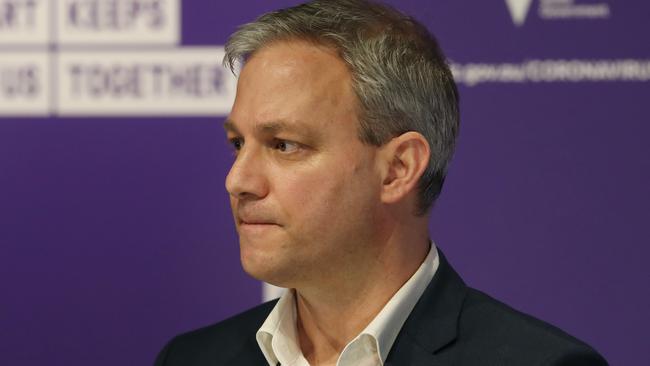
CHIEF HEALTH OFFICER SAYS CURFEW ‘NOT OFF THE TABLE’
Chief Health Officer Brett Sutton says “nothing is off the table” when it comes to continuing curfews in Victoria.
Prof Sutton said he expected to see masks “for the next month in one form or another” because masks make people take the virus seriously.
He said Melbourne’s northwest and pockets of the southeast were still hotspots but numbers were trending in the right direction and acknowledged that Wednesdays were often “spike days” for results.
However, he said it was good to see three consecutive days in double figures.
“There is a stabilisation in numbers,” Prof Sutton said. “Only three or four new cases in the whole of regional Victoria on a daily basis now, and that is why the active cases are coming down so significantly, because there are really very few new cases arising in those local government areas.”
When asked about testing people who didn’t have symptoms, Prof Sutton said: “There are some higher-risk settings, some high-risk industries, where there has been more proactive testing symptomatically of individuals. It remains very low yield. You have to do thousands and thousands of tests to find a case.
“We should really focus our efforts on trying to make sure that the more than 50 per cent of people who have symptoms, who are getting tested are coming forward for testing. That has got to be our priority.”
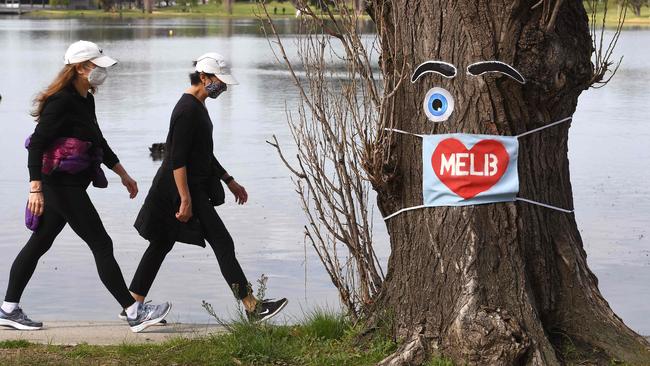
With regard to Victoria having a third day in double digits, Prof Sutton said he was not happy with a number higher than zero.
“We think there may be more than 100 cases today but we want to find all of them. That is why we need to increase testing numbers. It is OK, it is broadly in line with what modelling has suggested we would be at this stage,” he said.
He said if the seven-day or five-day trend did not decrease over the coming week, Victoria would not be on track, and it was essential for the number to continue trending downward.
Prof Sutton said there was a push to get testing in the southeast, because there was not enough compared to the northwest.
Most of the positive cases are coming out of the north and west, with the Dandenong, Casey local government areas being more of a concern in recent days.
Most of the cases in those postcode hotpots are from hospitals and aged care but community cases are also often linked to workplaces and households.
Prof Sutton said the proportion of Victoria’s daily totals that had been mystery cases early on in late June was at about 15 per cent. It rose above 25 per cent and it has come back down to 15 per cent.
He said if Victoria could get cases below 30, and the proportion of mystery cases continued to be driven down, then Victoria would absolutely be in very low single figures but conceded that mystery cases could not be modelled.
Active aged care outbreaks:
— 214 cases linked to Epping Gardens Aged Care in Epping
— 203 cases linked to St Basil’s Homes for the Aged in Fawkner
— 197 cases linked to BaptCare Wyndham Lodge Community in Werribee
— 161 cases linked to Estia Aged Care Facility in Ardeer
— 139 cases linked to Kirkbrae Presbyterian Homes in Kilsyth
— 127 cases linked to Twin Parks Aged Care in Reservoir
— 123 cases linked to Cumberland Manor Aged Care Facility in Sunshine North
— 116 cases linked to Japara Goonawarra Aged Care Facility in Sunbury
— 115 cases linked to Outlook Gardens Aged Care Facility in Dandenong North
— 114 cases linked to Estia Aged Care Facility in Heidelberg
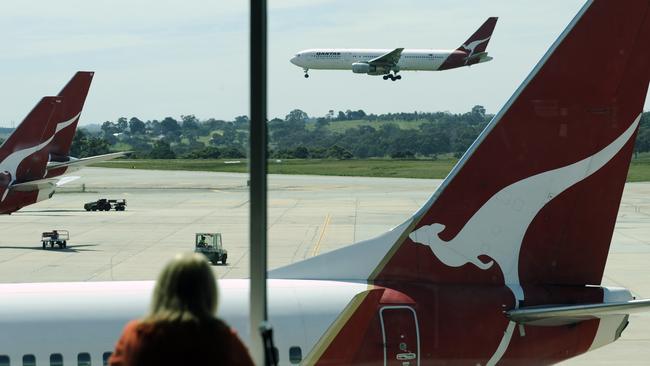
VACCINE WOULD ALLOW INTERNATIONAL TRAVEL TO RESUME
Chief Health Officer Brett Sutton believes international travel could be possible late next year because a vaccine is likely within 12 months.
Prof Sutton said he expected a worldwide vaccine for coronavirus would be found within “six months hopefully” and “six to 12 months probably”.
He told a Rotary Melbourne webinar an effective vaccine could then open the way to return to international travel for Australians.
“If we have a really good vaccine that protects us at a high level ... then we’d be in a good position to travel soon thereafter.’’
More than 30 vaccines are being developed and tested around the world and early results were encouraging, he said.
Prof Sutton said Australia was tackling an aggressive suppression strategy which was equivalent to an elimination approach championed by other countries, such as New Zealand.
When asked about hydroxychloroquine and other potential therapies, Prof Sutton said all therapies should be explored and trialled with clinical discretion.
“I’m not one to exclude anything from being the subject of a trial or being used with some clinical discretion to see what outcomes they might have.’’
But he warned different trials had varying levels of testing and efficiency.
“What I would say is that some people have jumped to conclusions about single sometimes poorly designed studies that have real limitations and real weaknesses in the conclusions.’’
Prof Sutton said hydroxychloroquine had not shown any “survival benefit in individuals’’.
“And (it) hasn’t shown robustly that it prevents people acquiring the virus but again I’ll leave it others to provide a view on that.’’
— Ian Royall
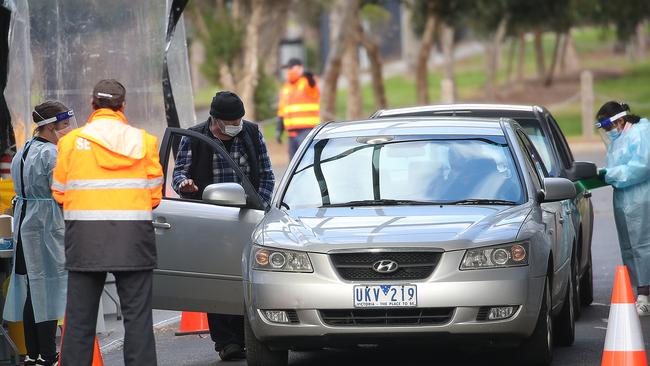
PROTECTIVE CUSTODY OFFCERS TEST POSITIVE
Three protective custody officers based at a bustling southeast police hub have tested positive to coronavirus
The officers were notified on September 1 and 2 that they had the deadly virus, forcing the busy Dandenong police station to temporarily shut down.
Victoria Police said they had fewer than 10 police officers and protective services officers currently self-isolating after testing positive to coronavirus.
“The custody area was blocked off and professionally deep cleaned yesterday and again today, with other police personnel asked to not attend during this time,” police spokeswoman Cathy Le said.
“All public areas such as the station foyer were also deep cleaned as a precaution.
“The community can be assured that service delivery will remain unaffected during this time.
“The station has since reopened after it closed temporarily while it was being deep-cleaned.”
Police would not provide detail on how many members were required to quarantine as a precautionary measure.
Contact tracing is under way.
— Brianna Travers
SHOULD I GET A COVID TEST IF I HAVE HAYFEVER?
Chief Health Officer Brett Sutton said while hayfever symptoms may involve sneezing or a scratchy throat in the morning, if there were no ongoing symptoms, no cough or fever or headaches or fatigue, that would not require testing.
However, those with ongoing symptoms would need to get tested for coronavirus.
Premier Daniel Andrews is continuing to urge people to come forward and get tested if we want to lock in a “covid normal” that allows people to return to work and businesses to reopen and for this to continue into 2021.
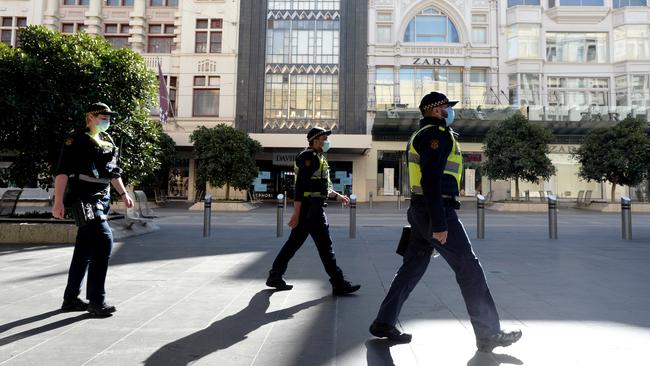
MYSTERY CASES 15 PER CENT OF VICTORIAN INFECTIONS
Mystery cases are still taking up about 15 per cent of Victoria’s daily infections, raising doubts on how Melburnians can emerge from lockdown and regional Victorians from stage three restrictions.
Despite lower numbers, with Victoria recording 58 virus cases on Tuesday and 90 on Wednesday, chief health officer professor Brett Sutton revealed there were 4351 coronavirus cases with an unknown source.
There were just 760 mystery cases when metropolitan Melbourne was locked down about a month ago.
“We are still seeing around 15 per cent as a proportion of our daily totals as mystery cases,” he told reporters on Wednesday morning.
“For today‘s numbers, I can’t tell you, they will be closed off in the next 48 hours. But looking back at the week, it is clear it is still sitting around 10 or 15 per cent.”
Victorians are awaiting crucial details on two roadmaps, one on how Melburnians will emerge from lockdown and the other on how stage three restrictions in regional Victoria will ease.
The Premier will make the announcements on September 6.
But Prof Sutton said these roadmaps hinged on the data, particularly the rate of mystery cases.
“It does depend where they are occurring, it is all clustered towards the end of the month. It is not about a daily average, if you suddenly get a significant number that you can’t track down in a short period of time,” he said.
- Read the full story here
PREMIER WARNS AGAINST OPENING UP TOO QUICKLY
The Andrews Government will extend Victoria’s state of disaster for at least 11 more days. The declaration was due to expire at 6pm Wednesday.
Premier Daniel Andrews said if Victoria were to open up too fast, it could be certain of a third wave of coronavirus.
He said an unprecedented level of investment was what was needed right now but the thing he was most acutely focused on was getting the roadmap out of lockdown right.
“Unless it’s done safe and steady, it’s just not going to work,” Mr Andrews said.
“The vast majority of Victorians want their pain, their hard work to count for something.”
“If it’s quick, it won’t be safe and it won’t last very long.”
POLICE FINE 129 PEOPLE FOR BREACHING RESTRICTIONS
Meanwhile, a man fined for breaching COVID-19 restrictions told police he drove from Sunshine North to Broadmeadows to deliver rice to his children.
However police did not buy his story, finding drugs and $11,990 cash in his car.
He was among 129 people fined for breaching health orders in the past 24 hours.
Sixty-four people were fined for curfew breaches and 18 were fined for not wearing a mask.
Many claimed to police they had left the mask at home but were slapped with $200 fines.
A woman who breached curfew in Southbank told police she needed to buy cigarettes.
HOW STATE OF EMERGENCY VOTE UNFOLDED
A Greens MP returning from maternity leave was the deciding vote late on Tuesday night as Victoria’s controversial state of emergency powers were extended for up to six months — half what the government was initially seeking.
A marathon session in the Victorian Upper House ended at 2am Wednesday morning with the contentious bill passing through 20 votes to 19.
Samantha Ratnam, of the Victorian Greens, gave the Andrews Government the crucial third crossbench vote to get the legislation passed after she arrived at Spring St with her one-month-old daughter, Malala.
Initially planning to stay at home rather than attend parliament, she joined Reason Party MP Fiona Patten and Animal Justice Party MP Andy Meddick in supporting the government’s legislation in the Upper House after it backed down on its bid to extend the powers by 12 months.
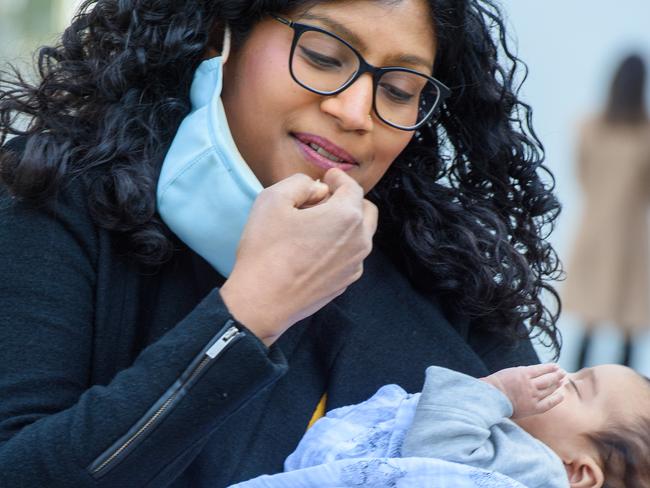
The government faced intense backlash over its original proposal, which would have given Premier Daniel Andrew and Chief Health Officer Brett Sutton the ongoing power to impose restrictions, including to wear masks or to stay at home, without parliament’s approval until September 2021.
But the crossbench trio rallied behind a shorter extension of six months. The new bill also included clarification on the reporting of public health advice and of the powers of the Chief Health Officer.
The state Opposition was unsuccessful in its bid to have the state of emergency powers extended month to month
It will now be sent to the Legislative Assembly where it is expected to sail through because of the Andrews government’s large majority.
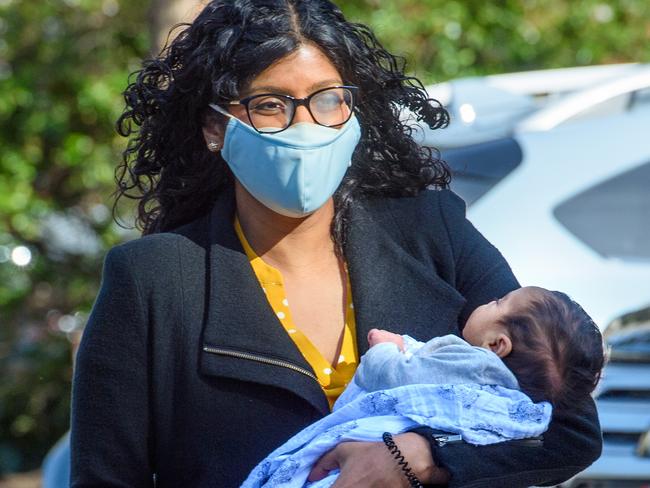
BUSINESSES REACT TO STATE OF EMERGENCY
Victorian businesses desperately awaiting a plan to move Victoria out of stage four restrictions are uncertain about being able to survive the Andrews government extended state of emergency.
There is uncertainty about how the government will be moving non-essential workplaces out of lockdown, with industry groups hoping for reprieve on Sunday.
Australian Retailers Association chief executive Paul Zahra said many retailers are left hanging in the balance because they turn most of their profit in the last few months of the year.
“Every week counts between now and the new year and that will mean make or break for many retailers’, Mr Zahra said.
“What the industry needs is clarity and certainty as we approach a staggered and sustainable reopening”, he said.
Non-essential businesses have reported 100 per cent drops in revenue during the second lockdown period alone and will not be able to cope with another false start, Mr Zahra said.
“A retail recovery is critical to an economic recovery and the ripple effect of Victorian lockdowns can be felt around the country”, he said.
“We need to move forward.”
- Olivia Jenkins
FEARS BIG BUSINESS WILL MOVE OUT OF VICTORIA
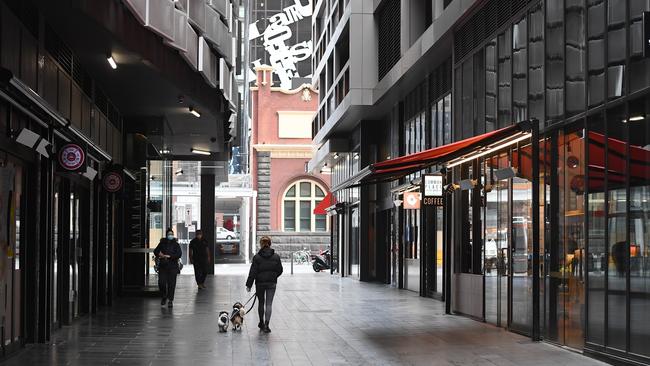
DAN BACKS DOWN ON STATE OF EMERGENCY
WHAT YOU NEED TO KNOW ABOUT STATE OF EMERGENCY
STATE OF EMERGENCY EXPLAINED
What is the state of emergency?
Under a state of emergency, authorised officers, at the direction of the Chief Health Officer, can act to eliminate or reduce a serious risk to public health by detaining people, restricting movement, preventing entry to premises, or providing any other direction an AO considers reasonable to protect public health. A state of emergency is declared under Victoria’s Public Health and Wellbeing Act and can run no longer than six months. The Andrews Government’s legislation extends this rule so it can run no longer than 12 months, pushing the expiry into March next year.
What power does it give and to whom?
The Chief Health Officer is given extraordinary powers to do whatever is necessary to contain the spread of COVID-19 and reduce the risk to the health of Victorians.
This includes the power to require masks to be worn, enforce self-isolation orders, limit public gathering sizes and put different stages of restrictions into different areas.
Why is this extension being done?
Without the state of emergency the Chief Health Officer would be unable to force many of the restrictions that have been introduced to combat COVID-19. It was due to expire in mid September and could not be extended without a change to laws. Daniel Andrews wanted to extend the current six month limit to 18 months, meaning the government would have the option to continue the current powers for another year. The government still needs to keep declaring the state of emergency in four-week blocks.
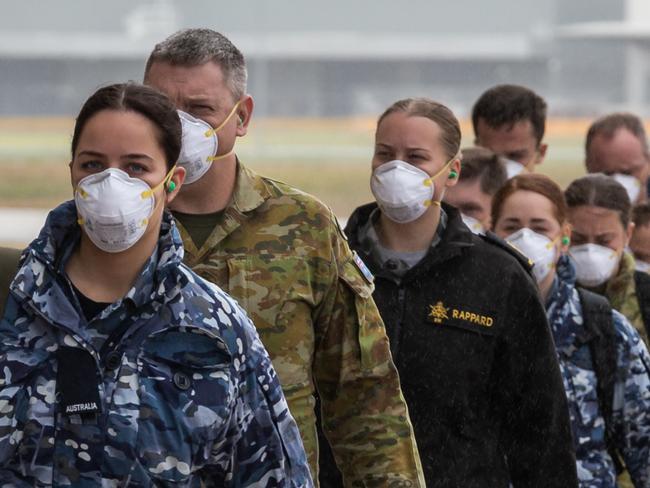
What were the concerns?
Those opposed to the proposal, including the Opposition and some Upper House crossbenchers, have objected about the length of time being sought by the government to continue extending the state of emergency. They also believe there was not enough oversight over the government and the way it wielded these powers. MPs opposing the laws wanted to include regulations that force public health officials and ministers to report to parliament more regularly and before each four-week extension. The government was reluctant to do this over fears it would put too much political control over the independent powers of the Chief Health Officer.
What was the result?
The Andrews Government needed three crossbench MPs to vote with them for the bill and this was done on Tuesday night by Fiona Patten, Andy Meddick and Samantha Ratnam after a compromise was made reached. The legislation that passed the Upper House changed the six-month limit to 12 months — half the extension initially proposed — and clarified the definition of “serious risk to public health” so the Chief Health Officer could still make directions when COVID-19 cases were low in the community. It also included a requirement that public health advice about the state of emergency be tabled in parliament every month to ensure accountability.
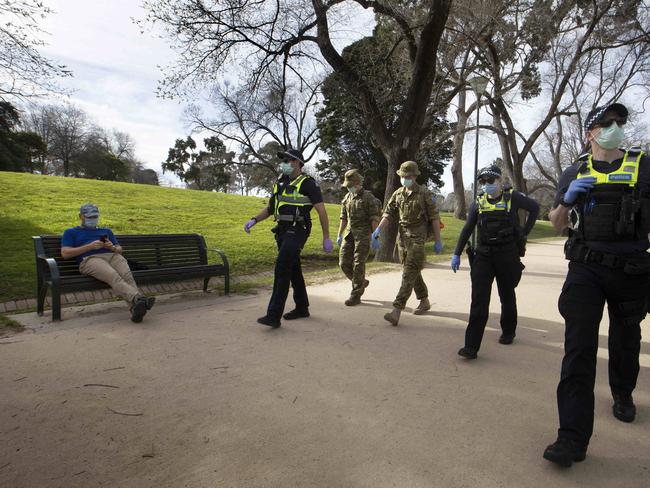
How did the votes fall?
All Upper House Labor MPs voted to pass the bill with Fiona Patten, Andy Meddick and Samantha Ratnam making a majority of 20. The Liberal Nationals and remaining crossbench MPs voted against. It now moves to the Lower House where it is then set to sail through and become law.
What were the alternatives?
Reason Party MP Fiona Patten wanted a deal that extended the state of emergency limit by six months but also created an oversight committee that the Chief Health Officer and other officials would need to consult before each four-week block. The State Opposition put forward their own amendments that would have extended the powers month-to-month and would force the government to come back to parliament more often.
When have we had a State of Emergency previously?
COVID-19 marks the first time the emergency powers have been activated under the new Public Health and Wellbeing Act 2008.
What happens now?
The bill will go to a vote in the Lower House which is controlled by the Andrews government in a large majority. It is expected to pass through easily.
HEALTH EXPERTS CALL FOR LOCKDOWN TO END
Senior Melbourne medicos have slammed Premier Daniel Andrews’ harsh coronavirus lockdown as “heavy-handed and unjustifiable”.
About 50 medical experts have called for the state of emergency to end, and the government to consult with doctors in developing future COVID-19 policies.
In an open letter to the Premier, the doctors said Victoria’s second lockdown had “caused unprecedented negative economic and social outcomes … which in themselves are having negative health outcomes”.
The stage four lockdown had caused mental health problems and contributed to domestic violence, they said.
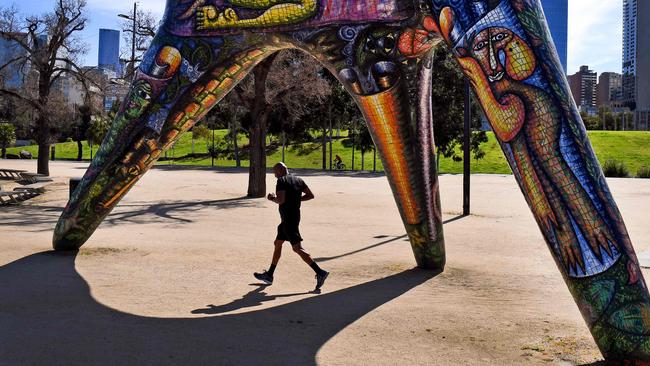
“Job losses, home schooling, the isolation of the elderly and single people and the restriction on the number of people who may attend funerals are but a few examples of how the government’s current response is harming the health of the general population,” the letter noted.
“In short, the medical, psychological and social costs of the lockdown are disproportionately enormous compared to the limited good being done by current policies, and are relevant factors to be taken into account by any responsible government.”
The letter — signed by surgeons, psychiatrists, oncologists, anaesthetists, obstetricians, gynaecologists, and GPs — stated the government’s current coronavirus policy was “ill-focused, heavy-handed and unjustifiable, as a proportionate response to the risks posed by COVID-19 to the public’s health”.
The letter’s lead author, urologist Geoff Wells, said contrary to the Premier’s mantra, therisk of dying from COVID-19 was low for people under 60.
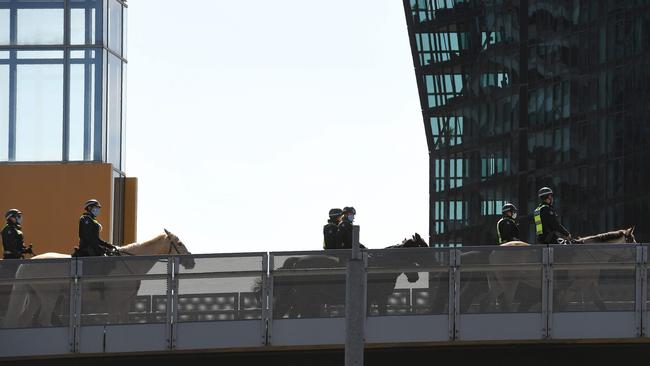
“It’s about the same toxicity as the flu,” Mr Wells said.
People were more prone to dying from untreated heart disease or cancer, he said.
He added it was likely many of those in nursing homes whose deaths had been linked to COVID-19 had died of other causes, such as dementia.
“It’s difficult to ascertain what the cause of death really is in these patients — it’s (COVID-19) probably been over-estimated,” Mr Wells said. “We think that there’s a better, more holistic approach to looking after people than having a severe, extended lockdown.”
The doctors’ letter recommends the state of emergency not be continued past September 13 and a bipartisan parliamentary group select a panel of non-politically aligned health experts to provide advice.
A Victorian government spokeswoman said: “Every decision we’ve made since the beginning of this pandemic is based on advice from the health experts and we’ll continue to work with them to keep Victorians safe and slow the spread of this deadly virus.”
STAYING ACTIVE IN LOCKDOWN
With gyms closed and group personal training sessions put on hold, the Victorian government is calling on people to find innovative ways to exercise during lockdown.
The government’s new campaign, Get Active Victoria, was created to encourage Victorians to get moving at home after it was found 80 per cent of children and more than 50 per cent of adults were not doing the recommended amount of physical activity.
The new initiative offers Victorians an online platform with free workout videos, challenges and ideas to get moving at home.
Community Sport Minister Ros Spence said being active, especially during lockdown, was important for physical and mental wellbeing.
“Get Active Victoria makes it easy to be active around home with great ideas to motivate us all to move more and get our 30 minutes of exercise each day,” Mr Spence said.
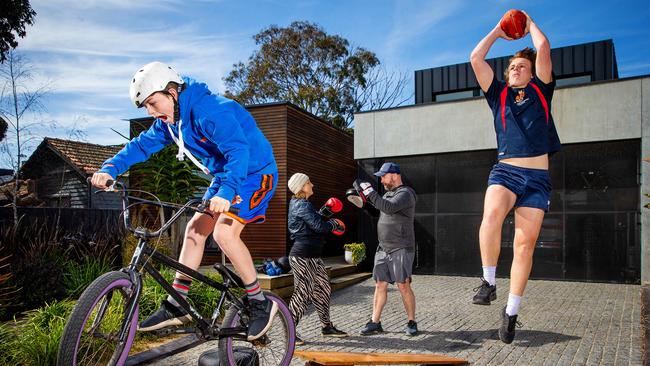
“This is an incredibly tough time for all Victorians, but we know getting active is so important to our physical and mental health.”
AFLW player Daisy Pearce and Australian cricket captain Meg Lanning have contributed to the online platform by creating challenges for people of all ages.
“When you’re active the benefits stretch way beyond physical fitness,” Pearce said. “It’s a really challenging time for Victorians at the moment and I encourage everyone to get involved in this great initiative.”
The workouts, which range from 10 to 30 minutes, give participants the option to choose to focus on strength, cardio and flexibility.
Participants can also connect and compete with others by tracking their progress and forming fitness teams online.
